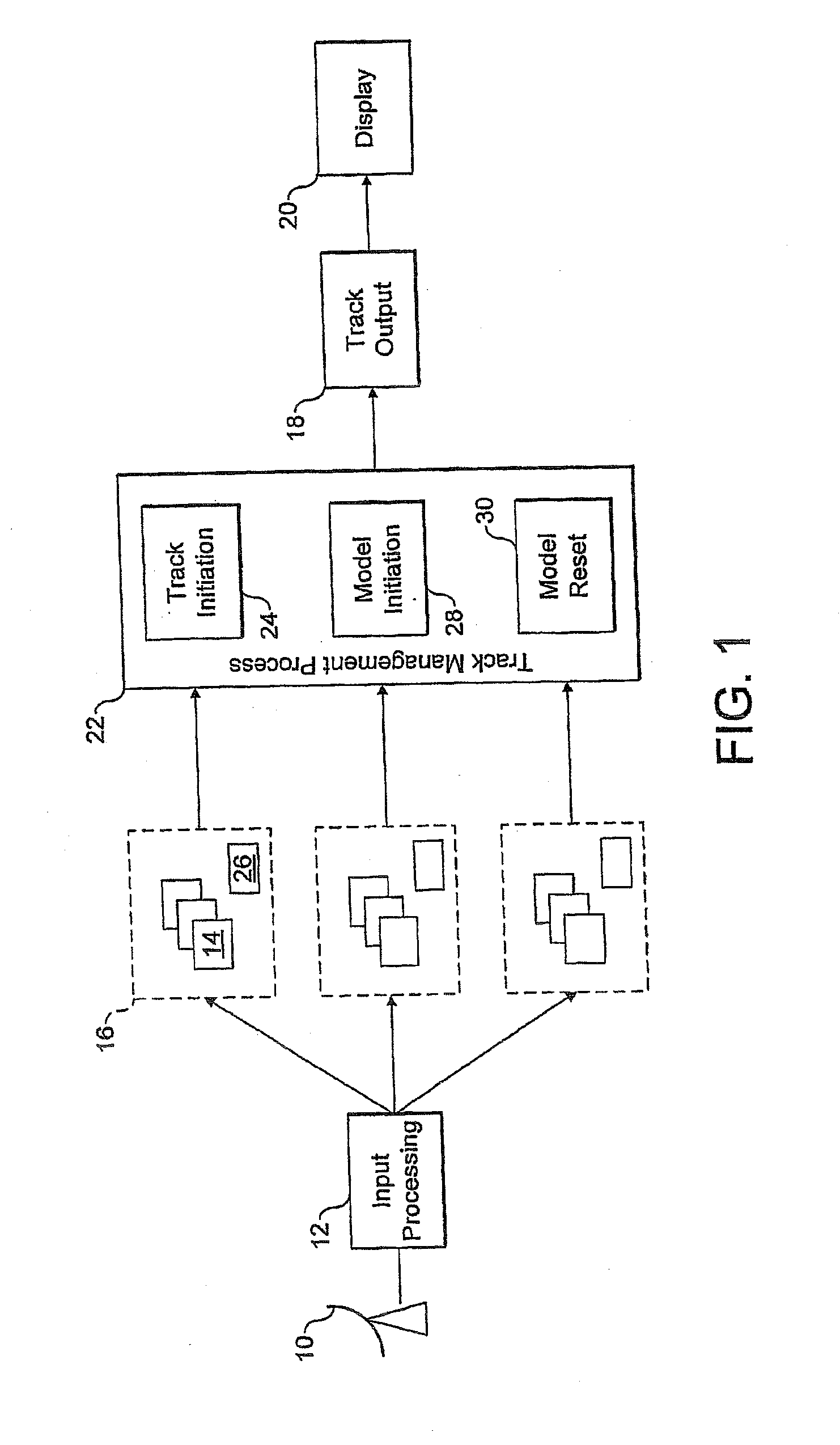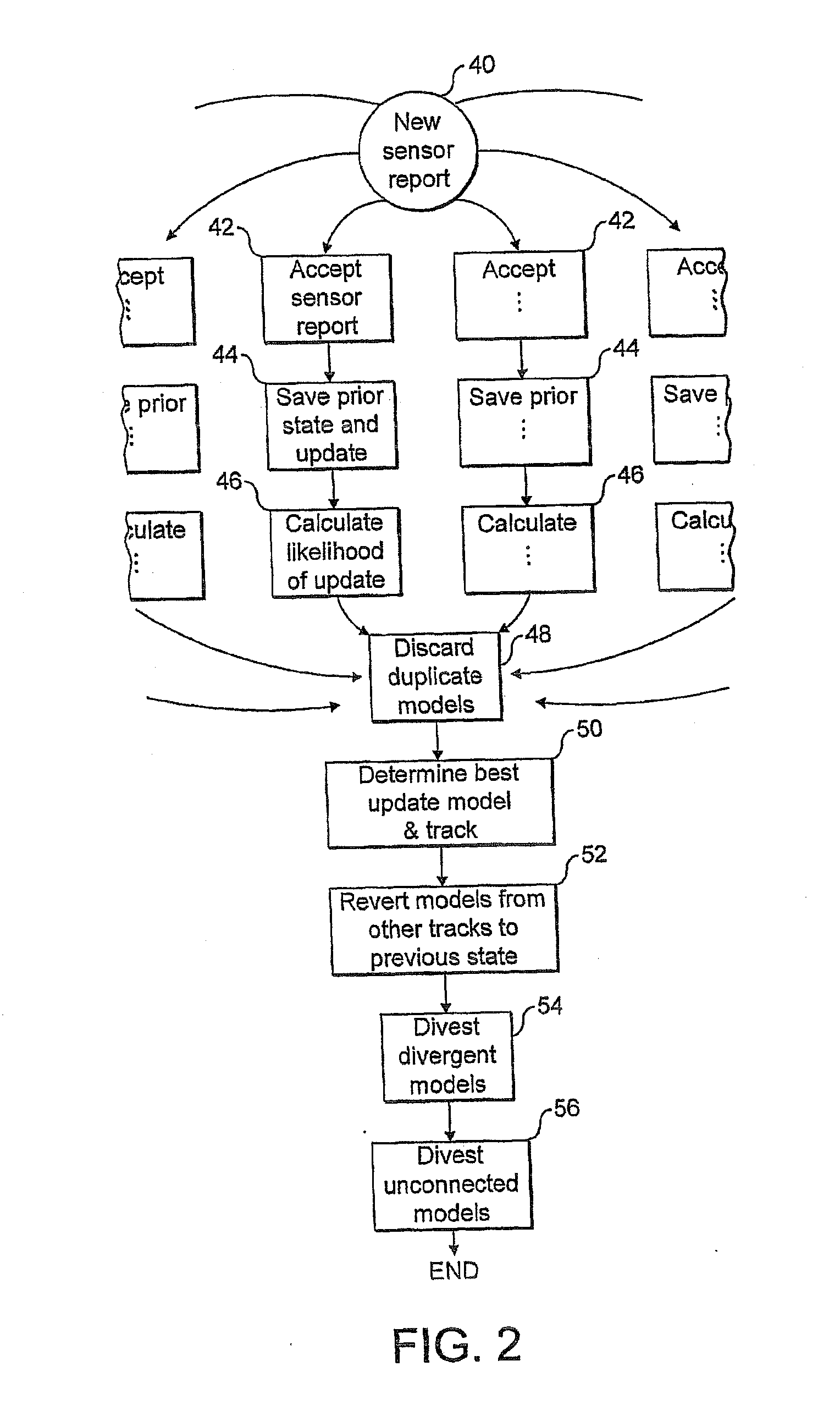Management of tracking models
a tracking model and model technology, applied in direction finders using radio waves, measurement devices, instruments, etc., can solve problems such as miscorrelation, difficulty, and sensor itself cannot provide any indication of report origin, and achieve intelligent and significant reduction of potential track hypotheses.
- Summary
- Abstract
- Description
- Claims
- Application Information
AI Technical Summary
Benefits of technology
Problems solved by technology
Method used
Image
Examples
first embodiment
Detailed Process
[0044]FIG. 2 is a flow diagram illustrating the processing carried out in respect of a new sensor report 40. Sensor reports may be used both to initiate new tracks and to update existing track models. Only the update process will be considered in detail here.
[0045]Each sensor report is sent to all of the models 14. Each sensor report is processed independently and completely before proceeding to the next one. Each model applies a gating process at step 42 to decide whether or not to update using the sensor report, using techniques familiar in the field of tracking using Kalman filters. Any model that accepts a sensor report creates a copy of its prior state as a separate model process and updates using the sensor report, at step 44.
[0046]Each model that updates using the new sensor report calculates, at step 46, a likelihood of the update based on a weighted distance measure and the model residual covariance matrix.
[0047]The set of models which has updated is further...
second embodiment
Detailed Process
[0056]Each incoming sensor measurement is processed independently and completely before proceeding to the next one. Each sensor report also undergoes whatever coordinate conversions may be necessary, removal of known biases and so on. The detailed sequence of process steps is illustrated in FIGS. 5 and 6.[0057]1. Each new sensor report is sent to all tracking processes, 72, 74, 76 each of which in turn sends the data to its constituent models 78.[0058]2. For each model 78, a gating process 92 is applied to the sensor report. The result will be an accept (the model will update using the sensor report) or reject (the sensor data is inapplicable).[0059]3. Any model that accepts a sensor report calculates 94 a likelihood, defined in equation (1) below. It also creates 96 an updated model state from the current model state combined with the accepted sensor report using techniques familiar in the field of tracking. The current model state is retained unchanged (also step 9...
PUM
 Login to View More
Login to View More Abstract
Description
Claims
Application Information
 Login to View More
Login to View More - R&D
- Intellectual Property
- Life Sciences
- Materials
- Tech Scout
- Unparalleled Data Quality
- Higher Quality Content
- 60% Fewer Hallucinations
Browse by: Latest US Patents, China's latest patents, Technical Efficacy Thesaurus, Application Domain, Technology Topic, Popular Technical Reports.
© 2025 PatSnap. All rights reserved.Legal|Privacy policy|Modern Slavery Act Transparency Statement|Sitemap|About US| Contact US: help@patsnap.com



